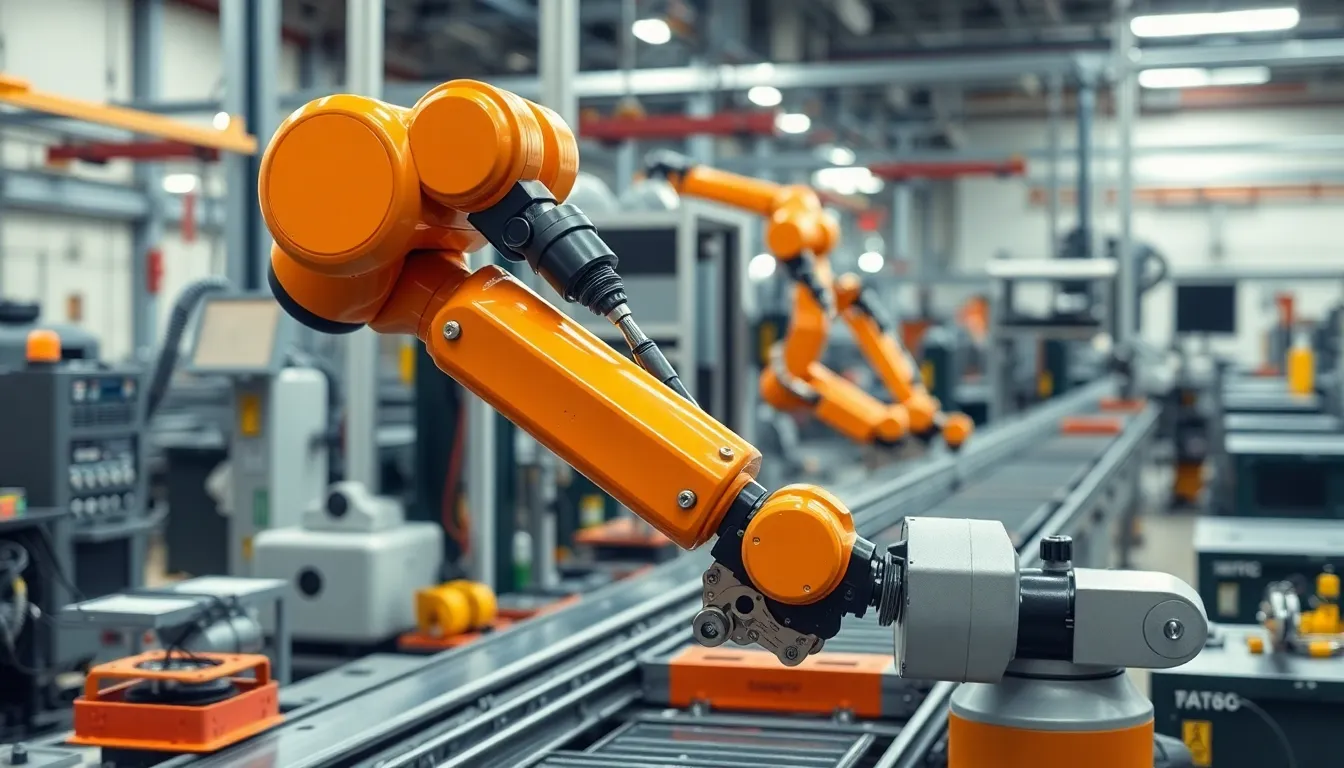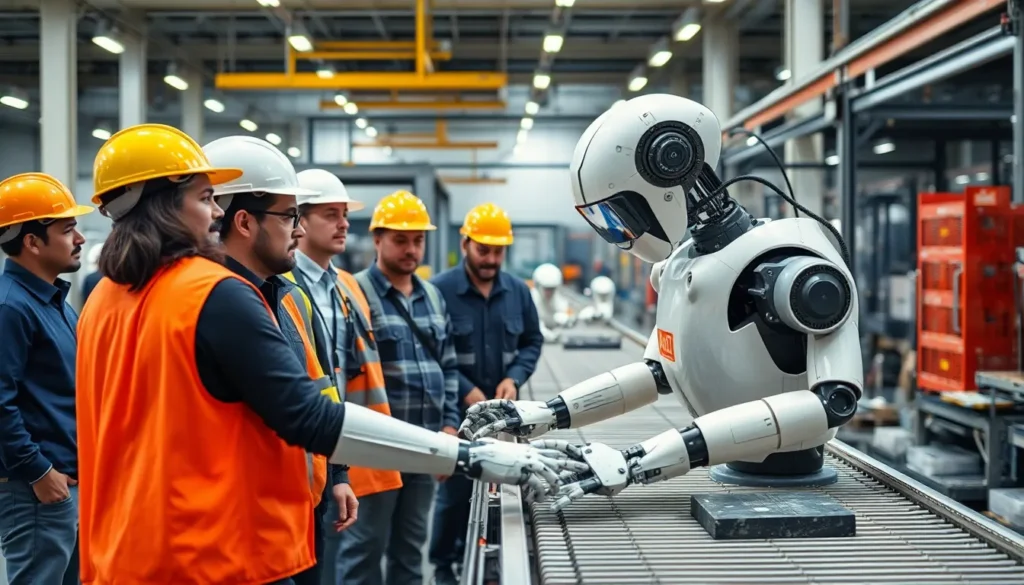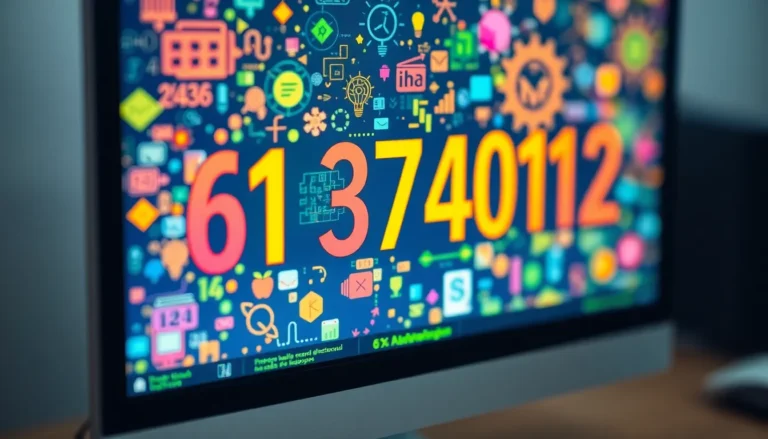In a world where robots are no longer just the stuff of sci-fi movies, AI-operated robots are stepping into the spotlight like they own the stage. These tech-savvy marvels are revolutionizing industries from manufacturing to healthcare, proving that they can do more than just make a mess of your living room. Imagine a future where your vacuum cleaner not only cleans but also tells you the weather—talk about a multitasker!
But it’s not all fun and games. As these intelligent machines take on more responsibilities, they’re reshaping the workforce and raising questions about the future of human jobs. Are we ready to embrace our new robot overlords, or should we be worried about them stealing our jobs? Buckle up as we dive into the fascinating world of AI-operated robots, where innovation meets a sprinkle of humor and a dash of reality.
Table of Contents
ToggleOverview of AI Operated Robots
AI-operated robots leverage machine learning algorithms to perform tasks autonomously. In industries such as manufacturing, these robots enhance precision and efficiency. Healthcare benefits from AI robots that assist in surgery or provide support to elder patients.
These robots analyze data in real time, adapting their actions based on the information gathered. Enhanced functionalities emerge, such as robots that not only clean but also deliver reminders or report weather forecasts. With advancements in natural language processing, communication with users becomes seamless.
Data from the International Federation of Robotics indicates that by 2025, companies will employ over 2 million autonomous robots globally, significantly boosting productivity. Observations reveal that these machines actively contribute to reducing operational costs while increasing output.
Concerns persist about the potential societal impact of widespread robot integration. Job displacement remains a significant point of discussion, as sectors evolve and require different skills. Despite the challenges, many experts argue that AI-operated robots could create new job opportunities in areas such as robotics maintenance and programming.
Moreover, collaboration between humans and robots is becoming increasingly common. Workers now complement robotic capabilities with human intuition and creativity. Enhanced training programs prepare the workforce for a collaborative future with these intelligent machines.
Regulations surrounding AI-operated robots also come under scrutiny. Ensuring safety and ethics in robot deployment is crucial as technological advancements accelerate. Organizations must establish guidelines for responsible AI use, addressing public concerns about privacy and security.
Types of AI Operated Robots

AI-operated robots come in various forms, each tailored for specific tasks and industries. Understanding these types highlights their diverse applications.
Industrial Robots
Industrial robots focus on manufacturing processes. They perform repetitive tasks such as welding, painting, and assembly with high precision. For example, companies use robotic arms in automotive assembly lines to enhance speed and reduce human error. Additionally, these robots integrate with systems for real-time monitoring and adjustments, optimizing productivity. According to recent statistics, the industrial robotics market is projected to reach nearly $45 billion by 2026, reflecting increased adoption across multiple sectors.
Service Robots
Service robots aim to assist humans in everyday tasks. Often found in hospitality, healthcare, and retail industries, these robots can deliver items, assist in cleaning, or provide customer support. For instance, some hospitals deploy robots to transport medication and supplies efficiently, improving turnaround times. Their use in restaurants includes greeting and serving customers. By 2025, the service robot market is expected to exceed $30 billion, showcasing their growing significance in enhancing user experiences.
Autonomous Mobile Robots
Autonomous mobile robots (AMRs) navigate environments without human intervention. Utilizing advanced sensors and AI, these robots can map surroundings, avoid obstacles, and optimize routes. AMRs play a critical role in warehouses and logistics, where they transport goods quickly and safely. Companies report significant improvements in efficiency, reducing operational costs by up to 30%. As their technology continues to advance, AMRs are becoming increasingly essential in supply chain management and urban logistics.
Benefits of AI Operated Robots
AI-operated robots provide several advantages that transform industries. Increased efficiency, enhanced precision, and cost reduction represent key benefits these robots bring to various sectors.
Increased Efficiency
Efficiency improves significantly with AI-operated robots. They automate routine tasks, allowing human workers to focus on complex challenges. In manufacturing, robots reduce production time by up to 20%, leading to higher output levels. Logistics and supply chains also experience streamlined operations, as autonomous mobile robots navigate warehouses seamlessly. According to industry forecasts, companies adopting AI technologies report operational improvements of as much as 30%. These advancements ensure businesses remain competitive in a rapidly evolving market.
Enhanced Precision
Precision remains crucial in industries like healthcare and manufacturing. AI-operated robots perform tasks with an accuracy level surpassing human capabilities. Surgical robots, for instance, assist surgeons with intricate procedures, minimizing risks and improving patient outcomes. The ability to repeat tasks flawlessly guarantees consistent quality in production lines. Studies indicate that implementing these technologies can reduce error rates by 90%, raising product integrity and safety standards. Businesses benefit from fewer defects, leading to enhanced customer satisfaction and trust.
Cost Reduction
Cost reduction emerges as a significant impact of using AI-operated robots. Automating tasks cuts labor costs while increasing productivity. Companies often experience lower operational expenses as robots handle various functions without fatigue. For instance, industrial robots maintain uninterrupted service, unlike human workers who require breaks. A report predicts that the widespread adoption of these technologies could save businesses up to $400 billion annually by 2025. By reallocating resources effectively, organizations can invest in innovation and growth while maintaining profitability.
Challenges in Implementing AI Operated Robots
Implementing AI-operated robots presents several challenges that require attention.
Technical Limitations
Technical limitations hinder the performance of AI-operated robots. Machine learning algorithms face difficulties in processing complex tasks that involve unpredictable variables. Sensors may struggle in environments with variable lighting or clutter, affecting navigation and data collection. Machine learning systems often require extensive training and can produce errors, especially in novel situations. Certain machines may also lack interoperability, making integration into existing systems complex. These factors make it crucial to invest in robust technology and ongoing updates to enhance robot adaptability.
Ethical Concerns
Ethical concerns arise with the integration of AI-operated robots. Questions about job displacement create anxiety in various sectors, as workers fear losing positions to automation. Furthermore, privacy issues need consideration since robots often gather data in public and private spaces. Transparency in decision-making processes also poses a challenge; many systems operate as “black boxes,” making it difficult to understand how decisions are made. Regulations surrounding safety and accountability require careful development to ensure responsible deployment and use. Addressing these ethical aspects is essential for fostering public trust in AI technologies.
Future Developments in AI Operated Robots
AI-operated robots are evolving rapidly, with advancements promising significant transformations in various sectors. These innovations will redefine operational capacities and enhance productivity.
Innovations on the Horizon
Robotic technology continues to advance, focusing on machine learning and advanced sensor integration. Companies are developing robots capable of learning from their environments and adapting to changes in real-time. Innovations in natural language processing will enable better human-robot communication, facilitating smoother interactions. Autonomous maintenance systems will also emerge, allowing robots to self-report issues and perform diagnostics. Enhanced collaboration capabilities will create robots that work alongside humans, maximizing productivity and efficiency in workplaces. New designs may incorporate softer materials for safety and adaptability in dynamic environments.
Potential Market Growth
The market for AI-operated robots is experiencing substantial growth. By 2026, projections estimate the market for industrial robots at nearly $45 billion. Service robots are set to surpass $30 billion by 2025, reflecting increasing demand across various sectors. Autonomous mobile robots (AMRs) play a crucial role in logistics, contributing to process efficiency and lower operational expenses. As more organizations adopt these technologies, the workforce is shifting, with new job categories emerging to support the demand for robot maintenance and programming. Overall, the increasing implementation of AI-operated robots emphasizes the importance of fostering a resilient and skilled workforce.
AI-operated robots are reshaping industries by enhancing efficiency and precision while providing innovative solutions in healthcare and manufacturing. As these technologies advance, they promise to create new job opportunities even amidst concerns about workforce displacement. The collaboration between humans and robots is becoming increasingly vital as organizations navigate this evolving landscape.
Regulations and ethical guidelines will play a crucial role in ensuring the responsible use of AI-operated robots. As the market continues to grow, it’s essential for society to adapt and embrace these changes, fostering a future where technology and human ingenuity work hand in hand. The journey ahead is filled with potential, and the integration of AI-operated robots is just the beginning.





